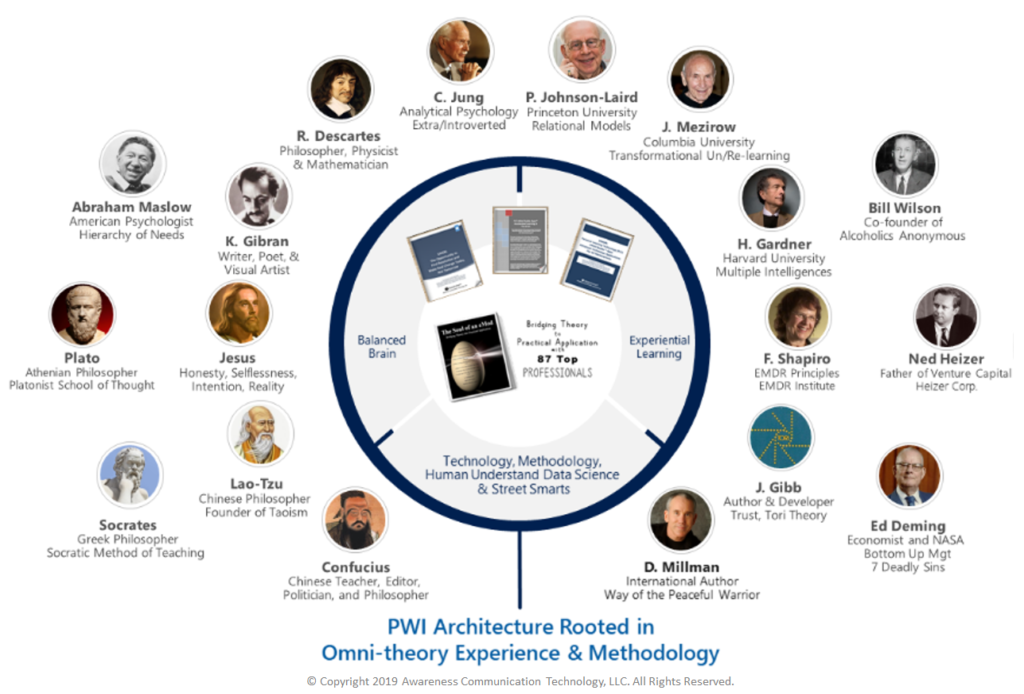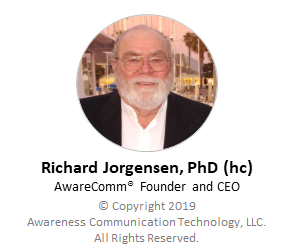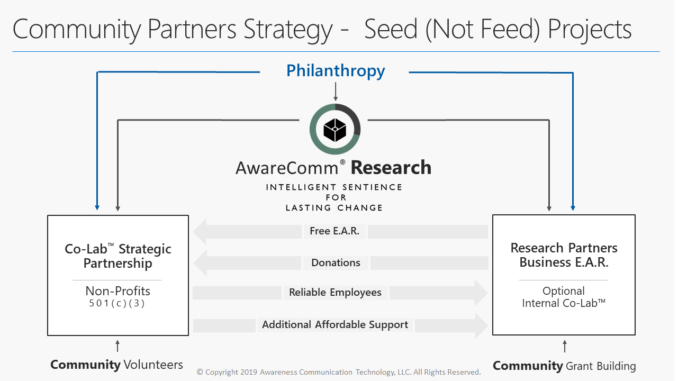
A Platform for Organizational Sustainability
Cyndi Suarez presents the second of four articles describing the value of platforms, how to choose a platform type and then build it. This ongoing discussion is intended to illustrate the value and necessity of the AwareComm® platform to partnering organizations and communities.
As a multi-gold Microsoft research and development partner, AwareComm® offers a Platform as a Partnership (PaaP) that taps into the power of artificial intelligence (AI) blending with business intelligence (BI) to instill, nurture and expand human intelligence (HI). As you uncover the insight contained within this article, take a moment to consider what a proven, managed partnership platform that delivers AI+BI+HI could do for your organization vision.
Building Your Platform
This is the second of four parts in a management series for nonprofits on platforms as organizational forms. The series will describe the dynamics of how platforms work and how to approach balancing, growing, and sustaining them over time.
Platforms are organizational forms designed for the meaningful exchange of information, goods and services, and currency. Because, they are designed to attract both producers and consumers, or users, rather than focus on creating units of value, they are ideal for innovation and scaling. Both are necessary for social change.
Platforms attract users—both producers and consumers—by structuring incentives for participation connected to the core interaction.1 For example, PayPal first attracted customers, or consumers, by giving them $10 to sign up, which they could then use toward their first purchase with an online merchant. It also added a feature that allowed customers to ask online merchants to accept PayPal.
On the other hand, YouTube, which focuses on producers, launched with a focus on content creators, or producers, whom it incentivized with contests and allowing creators to embed their videos off-platform. This served as a marketing tactic, as it spread the word about the platform. Viewers of the site, or consumers, eventually become producers as well. YouTube then built on the core interaction with producers by giving the top content creators a percentage of ad revenue.
YouTube’s unrelenting focus on producers helped in four ways. First, it seeded the platform with content. Second, it created a curation dynamic on the platform to identify quality content by letting viewers vote up or down on the videos they watched. Third, it leveraged producers to bring in consumers. Fourth, and most important, it created a set of content creators who had an investment in the platform, had a user following, and would not be easily incentivized to invest in another one.2
Platforms are based on meaningful interactions. They start with a core interaction—the main interaction, the highest value interaction. The core interaction is between participants, value unit, and filter (or curating function). Platforms are designed one interaction at a time and develop by layering other interactions over time. The best way to do this is through the use of modules—clearly defined subsystems that connect and communicate with each other through interfaces. In order for this to work, modules must be developed according to overall design rules. It is best to design modular from the start.
There are a few key strategies for launching a platform.
- The follow-the-rabbit strategy involves using a demonstration project that is not on the platform to model success and attract users to the new platform built on the model’s infrastructure. Amazon, for example, started off as an online retailer and then converted itself to a platform that allowed external producers.
- The piggyback strategy focuses on creating value units and recruiting users from different organization(s). For example, PayPal piggybacked on eBay and was so successful that eBay eventually bought it.
- The seeding strategy starts with supporting one kind of user, say producers, and then using the value created to attract other users, in this case consumers. Often the platform creates the first set of value units, which allows it to define the quality desired. For example, Google launched its app offerings by offering prizes to the creators of the best apps. This created high-quality value units, which attracted consumers.
- The marquee strategy seeks to attract users considered important to the platform. Oftentimes, these are producers. For example, Sephora, the beauty store chain that sells its own products along with those of external producers, negotiates deals with some of these producers that limits the sale of their products to its stores.
- The producer evangelism strategy is designed to attract producers who bring their own consumers along to the platform. It does this by helping producers serve their consumers better, and over time the producers benefit from the other customers on the platform. This is how crowdfunding platforms like Indiegogo and Kickstarter work.
- The big-bang adoption strategy uses traditional marketing to attract interest in the platform. For example, Twitter tipped into success when it partnered with the SXSW festival, by the end of which Twitter use had tripled.
- The micromarket strategy targets a small market of users that are already interacting. This is what Facebook did when it launched at Harvard University.
Once you’ve figured out which launch strategy, or combination of strategies, works best, the next task is figuring out virality—the way the platform grows and develops. For example, Instagram “converted all its users into marketers” by incentivizing them to share their photos on external networks.3 Similarly, “your goal is to design an ecosystem where senders want to transfer value units through an external network to a large number of recipients, ultimately leading many of those recipients to become users of your platform.”4
There are four key elements to begin the process of viral growth.
- Sender—The sender is not necessarily talking about your platform, as in word of mouth, but spreads her own creations and indirectly generates awareness and interest in the platform.
- Value Unit—The value unit contributes to virality when it is spreadable, that is, it helps start an interaction on an external network. (You can also connect an opportunity to join feature to the value unit.) However, not all value units are spreadable; some contain confidential information.
- External Networks—These are networks outside of your platform that overlap with yours. Platforms often overlap each other, as with news sites’ “Share on Facebook” button. Sometimes, those platforms seek to restrict overlapping so that their users are not overwhelmed with external offers. Platform managers must be strategic in identifying external, value-adding networks.
- Recipient—Finally, if recipients find the value unit valuable, they may react, or better yet, share them further, thereby growing your platform.
Notes
- Parker, Geoffrey G., Marshall W. Van Alstyne, Sangeet Paul Choudary. Platform Revolution. New York, London: W.W. Norton & Company, 2016. 85.
- Ibid, 87.
- Ibid, 101.
- Ibid.
https://nonprofitquarterly.org/launching-a-platform-solving-the-chicken-and-egg-question/
This article was originally published by NPQ online, on November 13, 2019 (https://nonprofitquarterly.org/launching-a-platform-solving-the-chicken-and-egg-question/). Used with permission.
There is a Better Way
If the above to-do list seems a little overwhelming to you, don't worry, you aren't the only one shaking their head in disbelief. It is a mammoth task to build from scratch all the elements involved in an effective deliverable platform. You could take on this task alone or with a team of volunteers who are just as invested in the foundational idea as you are (your purpose).
If you decide to go this route, you may find that all your creative energy and attention have been reallocated to the conception, planning and construction of your hosting platform. This isn't what your dream looked like, and that's without consideration to the immense effort involved in maintaining the platform once built. It's a good thing that an alternative to building from scratch and maintaining your own platform exists.
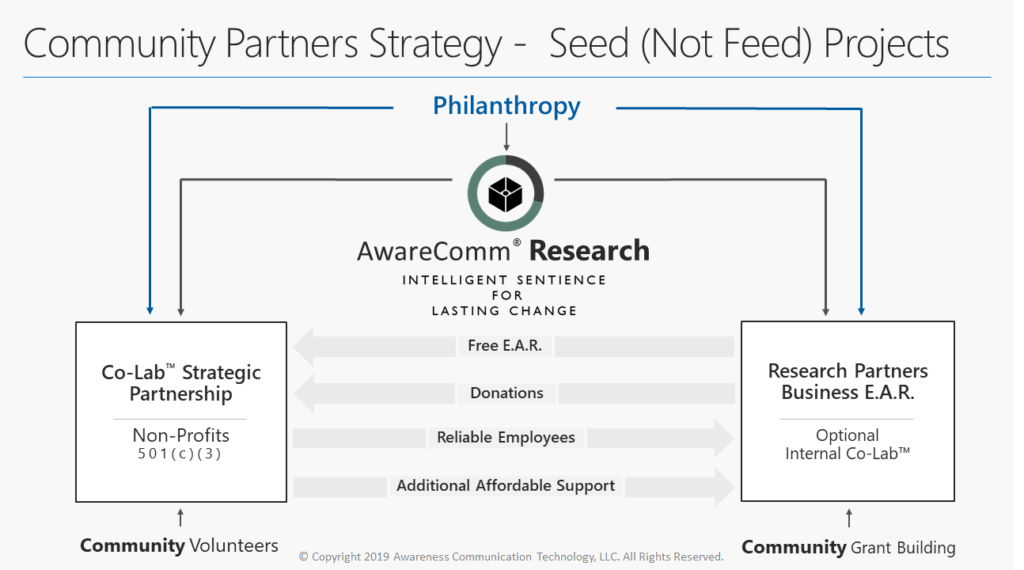
Imagine entering into a partnership built around an established platform that already addresses the important elements outlined in the article above. As an example, and as quoted above, "Platform metrics need to measure the rate of interaction success and the factors that contribute to it." The built-in AI+BI+HI of the AwareComm® PaaP includes a Culture Value-ation Indicator that not only collects data on what people are thinking, but it measure HOW they think and WHY they think the way they do. It then provides a confidential comparison of individuals to the collective group.
Beyond measuring the impact of the platform on all stakeholders, the AwareComm® PaaP includes all the tools needed to make long-term cultural, strategy and individual learning changes in your organization. When an operational element is knocked out of alignment with your organization vision you will have the proven power to gently return your eco-system to a state of collaborative effectiveness.
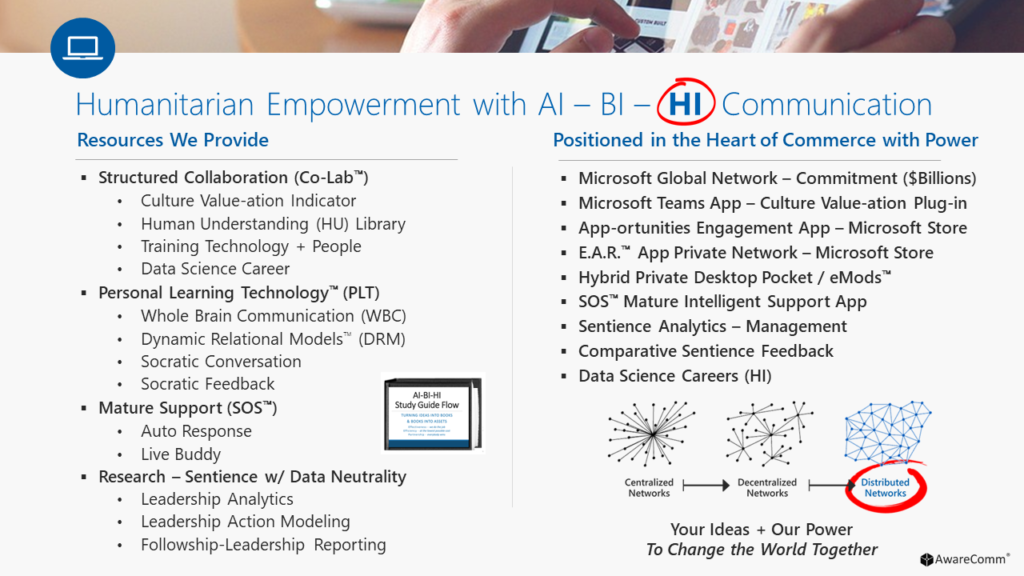
All Built into a Platform in a Box
Introducing App-ortunities, your gateway to the AwareComm® Collaboration Laboratory (Co-Lab™) platform. A deliverable, transferable and scalable eco-system of apps, methodology, technology, data science and human understanding with over 25 years of field implementation is available to approved partners possessing a social culturally responsible idea.
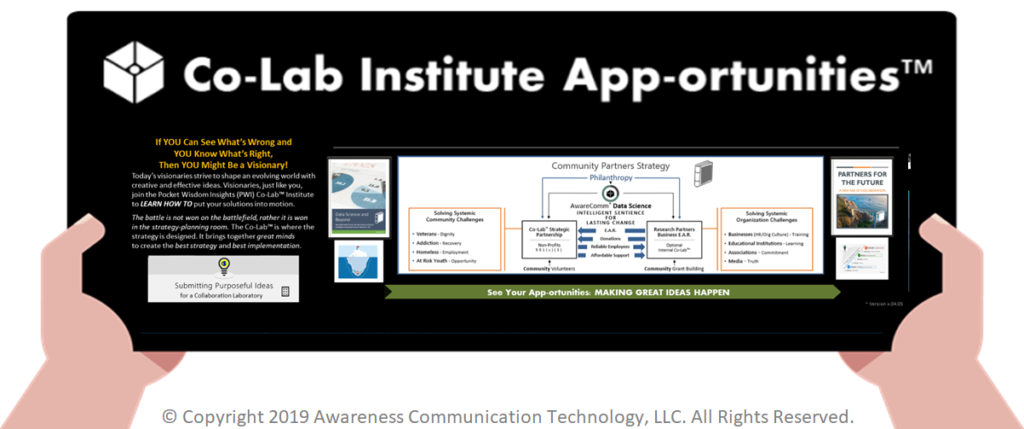
In order to build a community, you need a platform to build upon. Partner with the organization that's been building social culturally responsible platforms for the last 25 years.
Discover the Credentials
The AwareComm® founder and CEO, Richard Jorgensen, Ph.D. (hc) is a senior technology world veteran. He recalls, "I remember Bill Gates at his first Comdex (I believe it was) in Las Vegas when he appeared wide-eyed and bewildered with Windows 3.0. We all just smiled. Everybody must start somewhere. It turns out that he did okay, and today Microsoft’s legacy continues as Satya Nadella works to put the soul back into Microsoft."
The business and technology worlds of today struggle to grasp and apply:
- Data Science and Beyond
- True Learning vs Behavioral Conditioning
- Artificial Intelligence (transcend from not lose to…)
- Human Intelligence (creativity to win with a culture rooted in sentience)
- Organizing and Growing Communities that Seed and Support ALL Stakeholders
Dr. Jorgensen spent the last 30 years focused on those previous five points as they related to his life and career. As a result of his field research, a unique platform that offers a new dimension of Artificial Intelligence (Human Intelligence algorithm and human understanding Relational Models) was developed.
He has a legacy of quiet success and mentors to explain how he got here. Check out Dr. Jorgensen's LinkedIn Profile to learn more about the person and his social culturally responsible vision for humanity.
Dr. Jorgensen's Mentors, Advisors and Influencers
- Ned Heizer – Father of Venture Capital
- Earl Armstrong – Financial Consultant: Stanford Research Institute
- Jack Gibb – Renowned Author and Developer: Trust, Tori Theory
- Jim Mulvaney – Chairman of Board/CEO of Chela Financial Group
- Patty Burke – V.C. Fotomat, Speedy Print, Vitamin Manufacturing
- Dan Millman – Renowned Author, Publishing with HarperOne and Time Warner, Kramer Publishing
- W. Edwards Deming – Economist and NASA Bottom Up Management
- Edward Tufte, Ph.D. – Data Science / Analytics / Business Intelligence
Business Development History
- First IBM System 360 Team (ASP) Manufacturing Control Systems
- First DEC OEM Mini-Computer (PDP 8) National Beverage Distribution
- First AI Software Generator (J-Ware) Magazine Distribution and Analysis
- First Developer of Integrated AI SocraticQ™ Conversation/ Questioning
- First Financial Modeling System (Profit II) – Global Analytic Solutions
- First PLT Relational Behavioral Modeling Application (Princeton)
- First Symbolistics Application of Multiple Intelligences (Harvard)
Note from the AwareComm® Staff: Richard Jorgensen, Ph.D. (hc), earned doctorate as a result of his recognized contribution to humanity in the field of Social Research. The Humane Letters (hc) after his doctorate designation reference a level of devotion to humanity that is matched by very few. Dr. Jorgensen earned his doctorate from applying his research in the field successfully and to the benefit of those lives he touched.
Your Invitation
Fill out the eMod SocraticQ Conversation below to connect with the powerful AwareComm® Co-Lab™ team and discover how a partnership can strengthen your organization and establish a position of leadership in your target marketplace.

